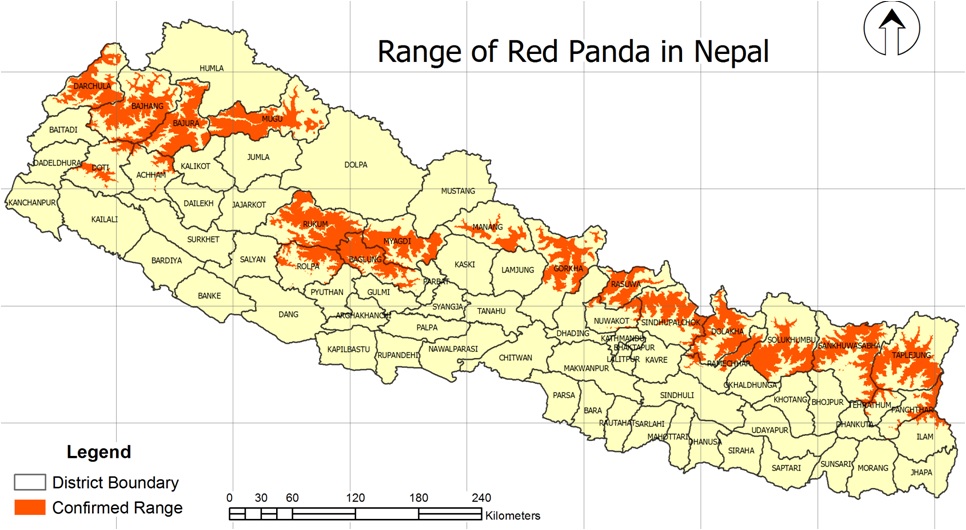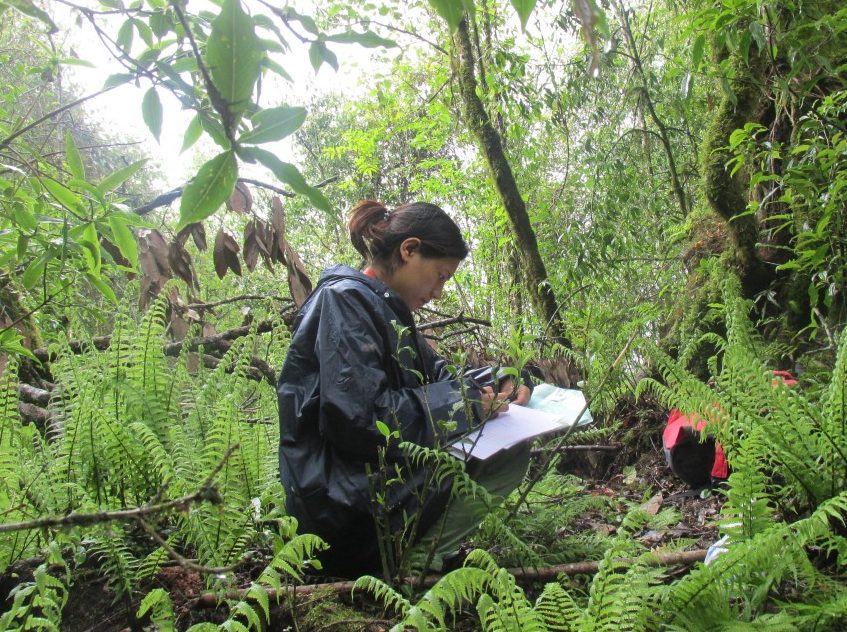
RED PANDA NETWORK IS EXCITED TO ANNOUNCE THE COMPLETION OF A NATIONAL RED PANDA SURVEY IN NEPAL.
The existing status of red pandas, Ailurus fulgens, is not well-known at this time. Studies in the past did not provide essential baseline data on the red pandas' distribution, the number of red pandas in each area, habitat quality, as well as deforestation and climate change in their region. In addition, previous studies were confined to the district and VDC (Village Development Committees) levels. This study is unique because it will evaluate the status of red pandas throughout their entire range in Nepal.

Our national red panda survey was very extensive with a number of very important goals. The first goal was to identify past trends and the present status and distribution of red pandas in Nepal. In 1997, scientist PB Yonzon estimated the total population of red pandas in Nepal to be around 314 individuals, whereas scientist Sharada Jnawali's study in 2012 indicated the population to be somewhere between 237 and 1061 individuals. These studies were inconclusive because they were primarily based on habitat suitability analysis. Red Panda Network's study will provide reliable results through the use of reports, land use maps of the survey areas, as well as detailed information on red pandas using state of the art GPS technology, and GIS (Geographic Information Systems) software.
The second goal of this study was to identify existing and potential red panda habitat as well as corridors and population hotspots in Nepal. Land use maps were used to study the types of forest within red panda habitat which include: broad-leaf deciduous forest, birch and alpine scrub, fir forest, broad-leaf conifer forest, rhododendron forest, oak forest, and coniferous forest with bamboo. The land use maps were also used to study the elevation of the habitat survey area (2000-4000m). Special attention was given to both direct and indirect signs such as foot prints, droppings, scratch marks and foraging marks.
 RPN Conservation Coordinator, Pema Sherpa, during national survey.
RPN Conservation Coordinator, Pema Sherpa, during national survey.
The third goal was to identify both climatic and non-climatic threats to red panda conservation. This was accomplished through focus group discussions, key informant discussions, as well as meetings with local experts, communities and stakeholders. These approaches have helped assess the efficiency of red panda conservation programs in Nepal.
The fourth goal of the red panda survey was to work with with non-governmental organizations and government agencies in reviewing current red panda conservation initiatives in Nepal. These initiatives and agencies were assessed for their efficiency and consistency.
The fifth goal was to recommend best management practices and measures for long-term red panda conservation at the program and policy level in Nepal. The best management practices were determined after completing the following activities: 1) Inception Workshop; 2) Consulation Meeting with Stakeholders; 3) Training of Field Biologists; 4) Field Survey and Sample Collection; 5) DNA Extraction and Assay Optimization; 6) Laboratory Processing; 7) Analysis and Report Preparation; 8) Sharing Workshop.
The survey was conducted in June and July, 2016 and many of our findings are in the analysis phase. Forty field biologists participated in this project who traversed along 1,147km of transects, collected 625 red panda fecal samples and identified and catalogued 72 species of bamboo. During the survey we discovered, for the first time, the presence of red pandas in Lamjung, Bhojpur and Dolpa districts!
Danielle Lippe
Writing and Communications Volunteer
Red Panda Network
